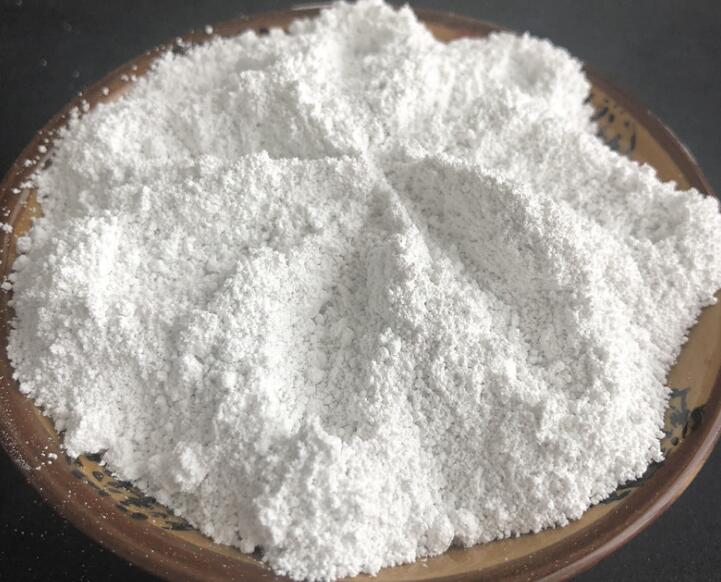From raw material processing to performance testing: Analysis of the whole process of magnesium hydroxide cable materials

With the continuous improvement of global requirements for flame retardancy and environmental protection of cable materials, magnesium hydroxide cable materials have gradually become one of the core materials in the wire and cable industry with their excellent performance and sustainable characteristics. This article will conduct an in-depth analysis of the whole process from raw material selection, processing technology, flame retardant layer preparation to finished product performance testing, providing technical reference and market insights for industry practitioners and purchasing decision makers
1. Raw material selection and pretreatment of magnesium hydroxide cable materials
1.1 Purity and particle size control of magnesium hydroxide
Magnesium hydroxide (Mg(OH)₂) is a flame retardant. Its purity directly affects the final performance of cable materials. The purity of high-quality magnesium hydroxide must be ≥95%, and the metal impurity content must be detected by X-ray fluorescence spectroscopy (XRF) and thermogravimetric analysis (TGA). In terms of particle size, the D50 value (median particle size) is usually required to be in the range of 1-3μm to ensure its uniform dispersion in the substrate
1.2 Matching of polymer substrates
The substrates of cable materials are mostly low-smoke halogen-free polyolefins (such as EVA) PE) or thermoplastic elastomer (TPE) should be considered when selecting
- Melt index (MI value) affects processing fluidity
- Compatibility with magnesium hydroxide. The interface needs to be modified by coupling agents (such as silanes)
- Temperature resistance level needs to match the working environment temperature of the cable
1.3 Selection of auxiliary additives
Including antioxidants (such as Irganox 1010), lubricants (calcium stearate), smoke suppressants (ammonium molybdate), etc. The addition ratio needs to be optimized through orthogonal experiments to balance flame retardancy and mechanical properties
2. The core processing technology of magnesium hydroxide cable materials
2.1 High-speed mixing and pre-dispersion
The raw materials enter the high-speed mixer (speed 800-1200rpm) for pre-mixing. The temperature is controlled at 80-100℃ to make the magnesium hydroxide and the substrate initially combined. The torque value needs to be monitored at this stage to prevent local overheating from causing degradation of the substrate
2.2 Twin-screw extrusion granulation
Use a co-rotating twin-screw extruder (L/D≥40:1) to control the temperature in sections
- Zone 1 120 - 140℃ (plasticization of substrate)
- Zone 2 150 - 170℃ (dispersion of magnesium hydroxide)
- Zone 3 160 - 180℃ (dynamic cross-linking)
- Die head 140 - 150℃ (preventing decomposition)
The difficulty of the process lies in controlling the shear heat to prevent magnesium hydroxide from decomposing into magnesium oxide (MgO) due to high temperature, resulting in a decrease in flame retardant efficiency
2.3 Cooling and pelletizing
The extruded strips are quickly cooled through a water cooling tank (water temperature 20 - 25℃) and then made into pellets with a diameter of 2 - 4mm by a rotary cutter. At this stage, it is necessary to ensure that the pellets are bubble-free and have a smooth surface to ensure the quality of subsequent extrusion molding
Three key technologies for the preparation of flame retardant layers
3.1 Extrusion molding process
The flame retardant layer of the cable adopts three-layer co-extrusion technology
1. Inner shielding layer Conductive carbon black modified polyethylene
2. Flame retardant layer Cable material with a magnesium hydroxide content of 50 - 65%
3. Outer sheath Weather-resistant halogen-free polyolefin
Process parameters need to be precisely controlled
- Screw speed 20 - 40rpm
- Die pressure 8 - 12MPa
- Pulling speed 15 - 30m/min
3.2 Crosslinking method selection
To improve the temperature resistance level, it can be used
- Chemical crosslinking Peroxide initiation (such as DCP) Applicable to medium and low voltage cables
- Irradiation crosslinking Electron beam irradiation (dose 80 - 150kGy) For high voltage cables
Performance test system of magnesium hydroxide cable materials
4.1 Flame retardant performance test
- Oxygen index (OI) test ASTM D2863 standard Qualified line ≥32%
- Vertical burning test UL94 V - 0 level (flame self-extinguishing time <10s)
- Smoke density test ASTM E662 Smoke density rating (SDR) ≤75
4.2 Electrical performance verification
- Volume resistivity IEC 60243 Requirement ≥1×10¹⁴Ω·cm
- Dielectric strength ≥20kV/mm (50Hz AC breakdown)
4.3 Mechanical and environmental resistance tests
- Tensile strength and elongation at break ISO 527 standard ≥10MPa and ≥150% respectively
- Thermal aging test 135℃×168h performance retention rate after aging ≥80%
- Acid and alkali resistance test No cracking after immersion in 5% HCl/NaOH solution for 48h
V. Market trends and technology upgrade directions
5.1 High filling and low viscosity technology
Through the compounding of nano magnesium hydroxide (particle size <1μm) and hyperbranched polymers, good processing fluidity can be maintained at 70% high filling
5.2 Multifunctional integrated materials
Develop composite cable materials with flame retardancy, smoke suppression and antibacterial properties to meet the needs of data centers, hospitals and other scenarios
5.3 Circular economy model
Establish a magnesium hydroxide recycling system to extract recycled materials from waste cables Reduce production costs by more than 30%
The full process production of magnesium hydroxide cable materials involves the deep integration of material science, process engineering and quality control. With the continuous upgrading of EU CPR regulations and China's GB/T 19666 standards, enterprises need to trace raw materials, process digitalization (such as MES system application), testing and certification (such as TUV UL certification)








